Hello to our biking enthusiasts once again! Are you a fan of biking adventures? Here’s the good news, if you like off racing, pit bikes are exactly what you need! You must love the rush of adrenaline and the sense of adventure that comes with riding off-road. The rough terrains familiar for off-road racing include grassy fields, dirt trails, and rocky pathways. Riding a pit bike, small and fast enough for novices but still takes skill and control, is a good choice. Riding through the varied landscape puts motorcyclists to the test as they face new obstacles. As a sport and a pastime, off-road racing allows riders to hone their skills in a challenging but rewarding environment. Now, let us understand what pit bikes actually are.
Insights into a Pit Bike
You must have certainly heard about various kinds of bikes but have you heard about pit bikes? A pit bike is a small, off-road motorcycles for use in the pit sections in motocross races. Smaller than full-size dirt bikes, Pit bikes are great for handling steep terrains and confined locations. Their stature belies their speed and versatility, thanks to their potent engines, knobby tires, and sophisticated suspension systems with shock absorbers. You won’t see dirt motorcycles on rough trails; pit bikes are more suited to smooth, enclosed terrain. They have outstanding performance and agility and are not permitted for use on public roads, but they are ideal for off-roading and pit racing. Also, when shopping for a dirt bike or pit bike, knowing the distinctions between the two types is helpful. Let jot down some of the key features of these bikes.
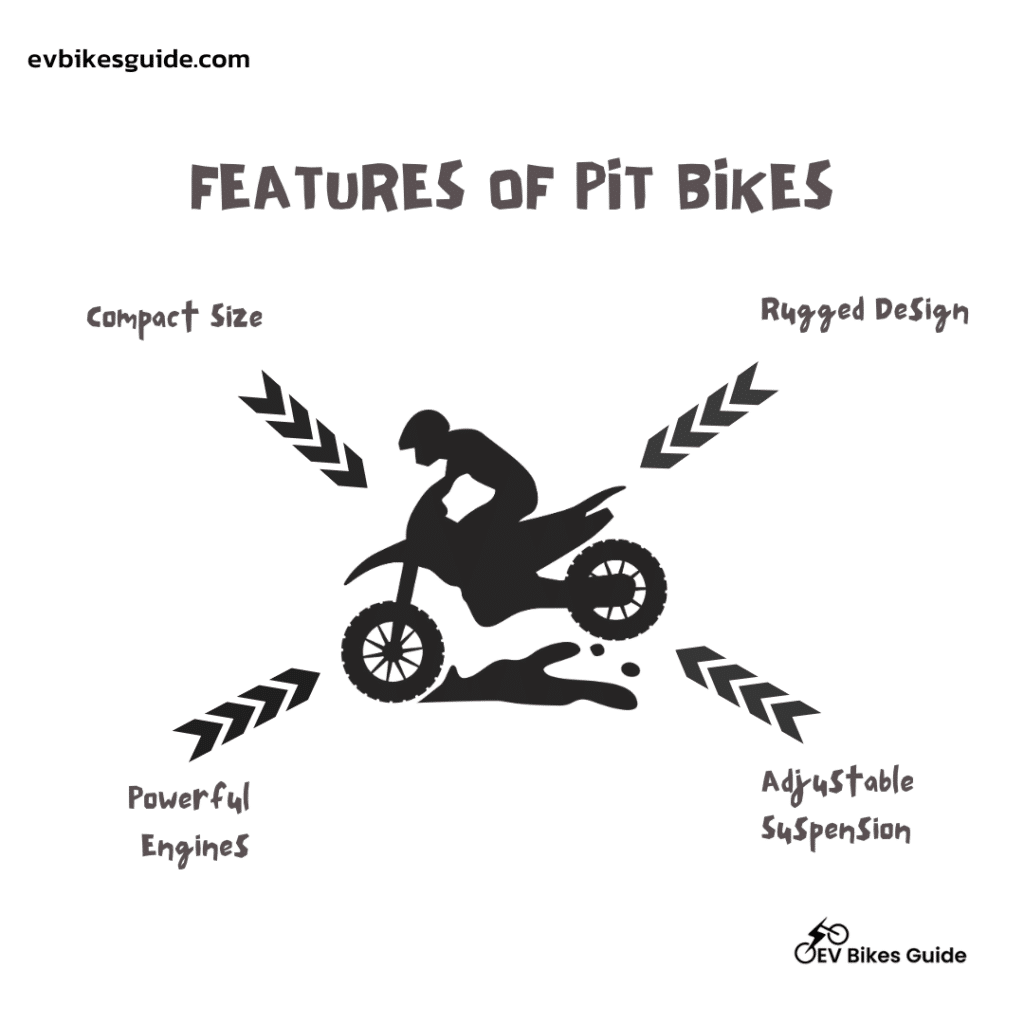
Key Features of Pit Bikes
Pit bikes are compact motorcycles designed for off-road use, offering agility and power in a smaller frame.
- Compact Size: Smaller frame and wheels make them lightweight and easy to maneuver.
- Powerful Engines: Typically equipped with 50cc to 150cc engines, providing a good balance of speed and control.
- Rugged Design: Built for rough terrains with knobby tires for grip and robust suspension for shock absorption.
- Affordability: Generally, more affordable than full-sized dirt bikes, making them popular for recreational use.
- Customizability: Many models are highly customizable, allowing riders to modify performance or aesthetics easily.
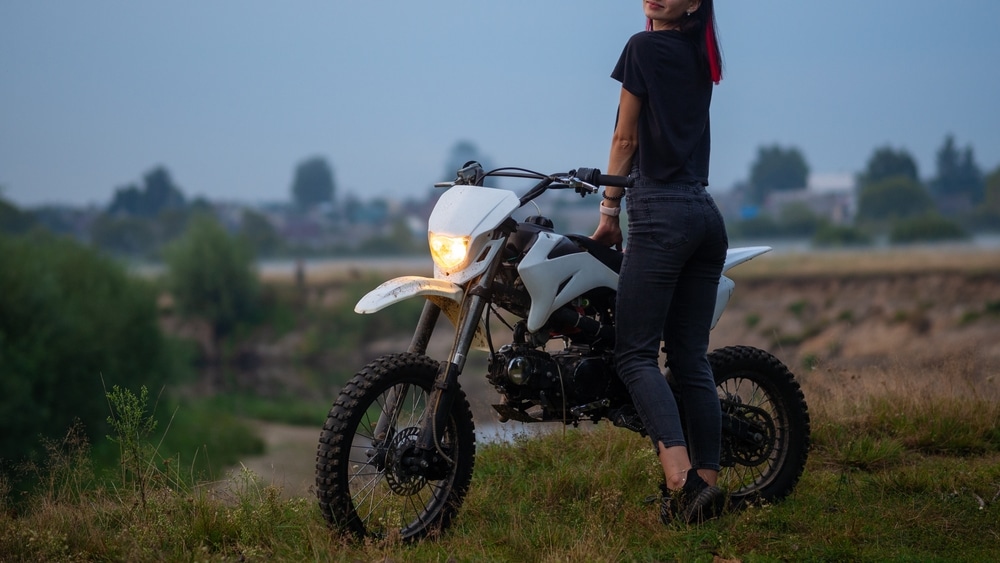
What is a Pit Bike Used For?
Pit bikes are incredibly versatile and serve multiple purposes beyond just being used in the pit areas of racing tracks.
Motocross Racing
- While pit bikes are not typically used in actual motocross races, they are essential for the mechanics and teams in the pit area.
- They help teams move around the track quickly to attend to bikes, deliver tools, and perform quick adjustments.
Practice and Training
- Many riders use pit bikes for practice sessions.
- Their smaller size and lower speeds make them perfect for honing skills in a controlled environment before transitioning to larger, more powerful dirt bikes.
Fun and Recreation
- Outside of competitive racing, pit bikes are popular for recreational riding.
- They’re perfect for short off-road rides on trails, in backyards, or on private tracks.
Utility and Transport
- Pit bikes can be used for various utility purposes around off-road tracks or campsites
- They can be used for transporting small loads or moving quickly between locations.
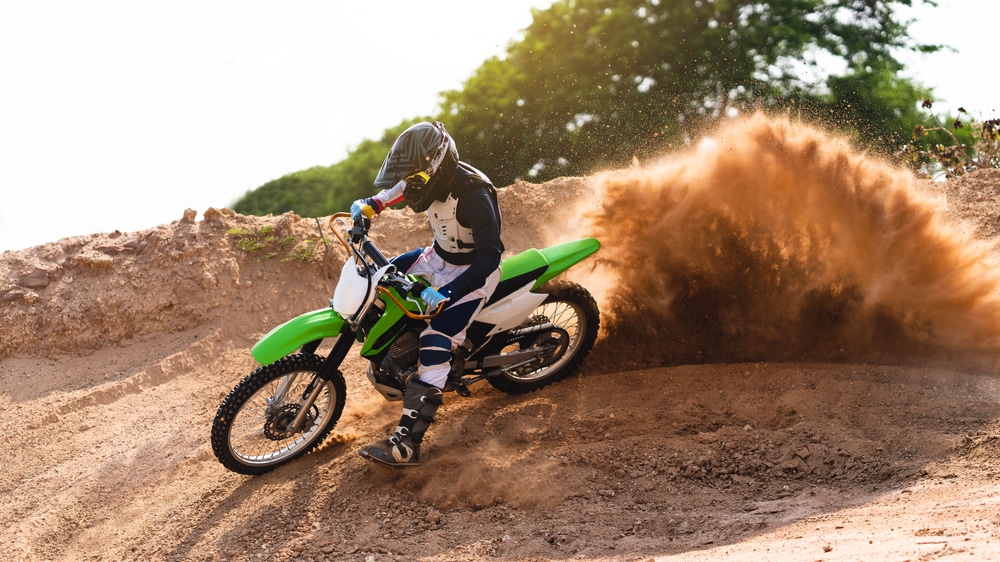
Pit Bikes vs. Dirt Bikes: What’s the Difference?
It’s easy to confuse pit bikes with dirt bikes, but there are some notable differences;
- Size and Weight: Pit bikes are generally smaller and lighter than full-size dirt bikes. This makes them easier to handle in confined spaces and on rough terrain.
- Engine Size: Pit bikes typically have smaller engines (50cc to 150cc) compared to full-size dirt bikes, which can have engines ranging from 125cc to 450cc or more.
- Purpose: While pit bikes are designed mainly for use in pit areas and for recreational riding, dirt bikes are built for off-road racing and serious trail riding.
Suspension Systems and Shock Absorbers
Pit bikes come with robust suspension systems, ensuring a smooth ride over rough terrains. These systems primarily consist of front forks and rear shock absorbers, both designed to absorb impacts and improve control.
- Front Forks: Pit bikes generally use telescopic forks. These are adjustable to handle different surfaces and riding styles.
- Rear Shock Absorbers: Adjustable rear shocks are common, allowing riders to tweak the settings for varying conditions and preferences.
- Customization: Riders can fine-tune the suspension to optimize comfort, handling, and performance.
- Impact Absorption: Both components work together to reduce vibrations and maintain stability across uneven terrain, enhancing the overall riding experience.
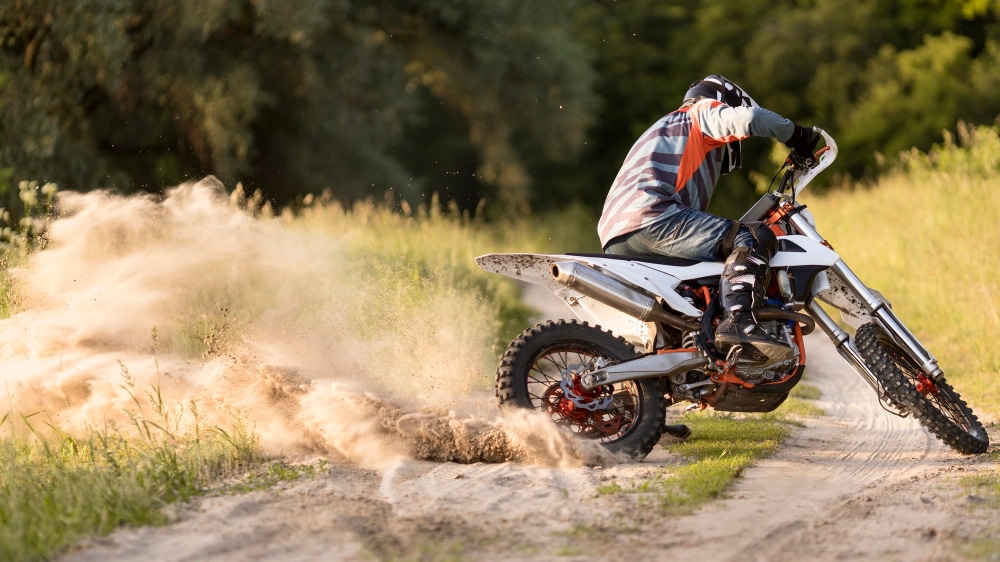
Speed & Performance of Pit Bikes
Pit bikes are fantastic for off-road adventures because they are fast and agile. Their maximum top speeds can vary from 30 to 50 miles per hour, depending on factors including engine displacement, bike type, and rider weight. A brief explanation is as follows:
- Engine Size: Engines ranging from 50cc to 110cc can typically achieve up to 30 mph speeds, while stroke engines ranging from 125cc to 150cc can surpass 50 mph.
- Acceleration: Pit bikes are more easily controlled on rocky terrains because of their rapid acceleration and lightweight construction.
- Flexibility: Their small size makes them easier to control, which is great for corners and jumps.
Pit bikes have the perfect combination of off-road performance and speed, making them ideal for recreational riding.
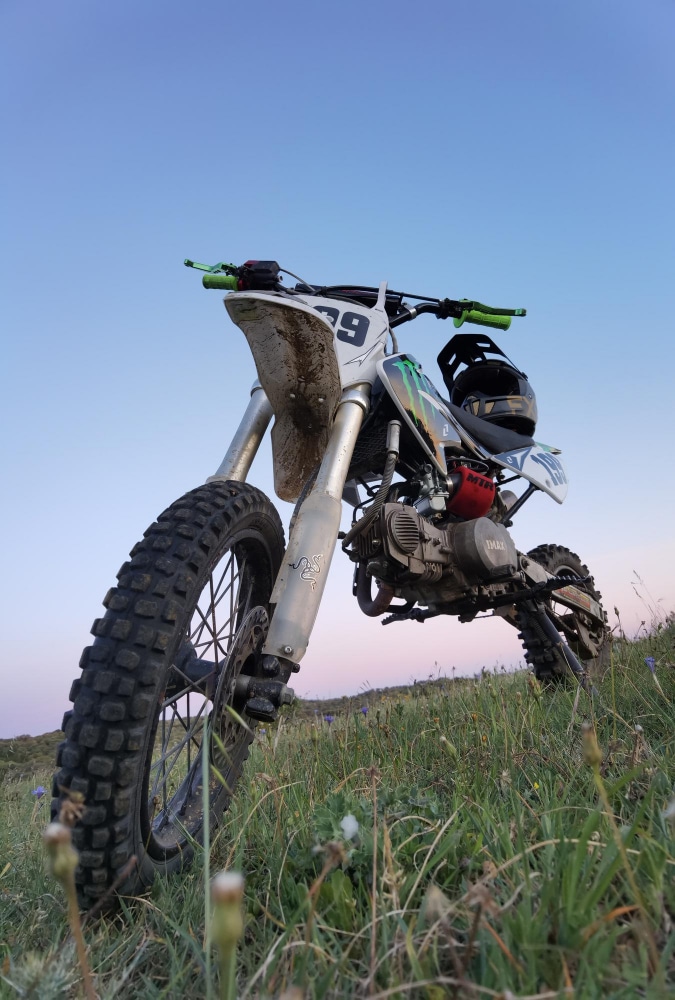
Final Thoughts
As we sum up, during motocross races or training, pit motorcycles are compact, multipurpose vehicles made for easy transportation in the pit areas. Pit bikes, what are they? These bikes’ tiny motors and knobby tires make them perfect for riding on rugged terrains. While full-size dirt bikes are known for their superior handling and higher speed, pit bikes are known for their superior maneuverability. They can easily navigate rough terrain because of their sophisticated suspension and shock absorbers.
In conclusion, pit bikes offer a one-of-a-kind combination of thrill and practicality on off-road adventures, making them ideal for practice and recreational riding while not being street legal.
Ride on rugged roads with style!




